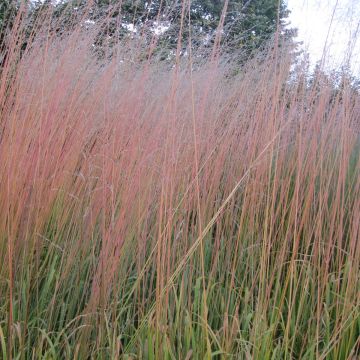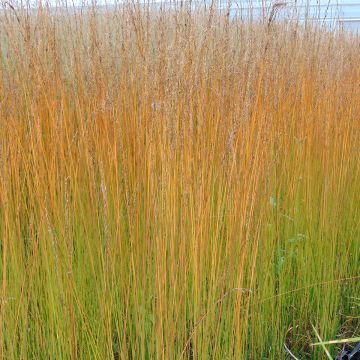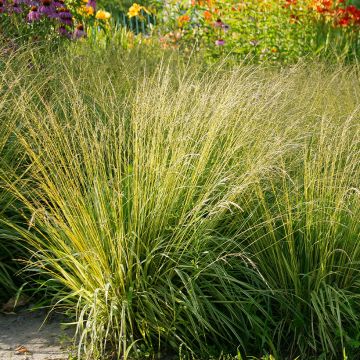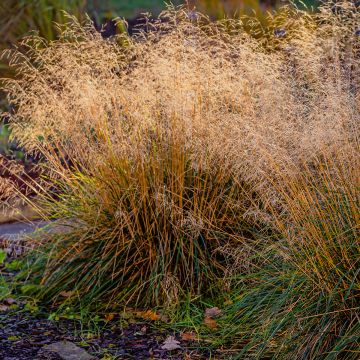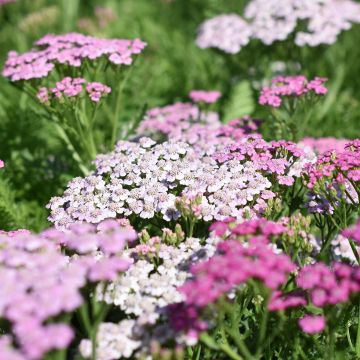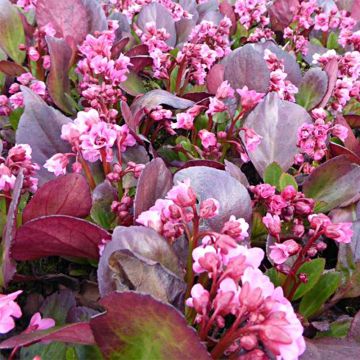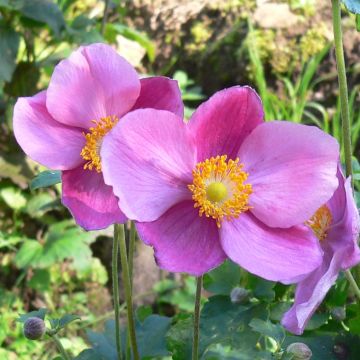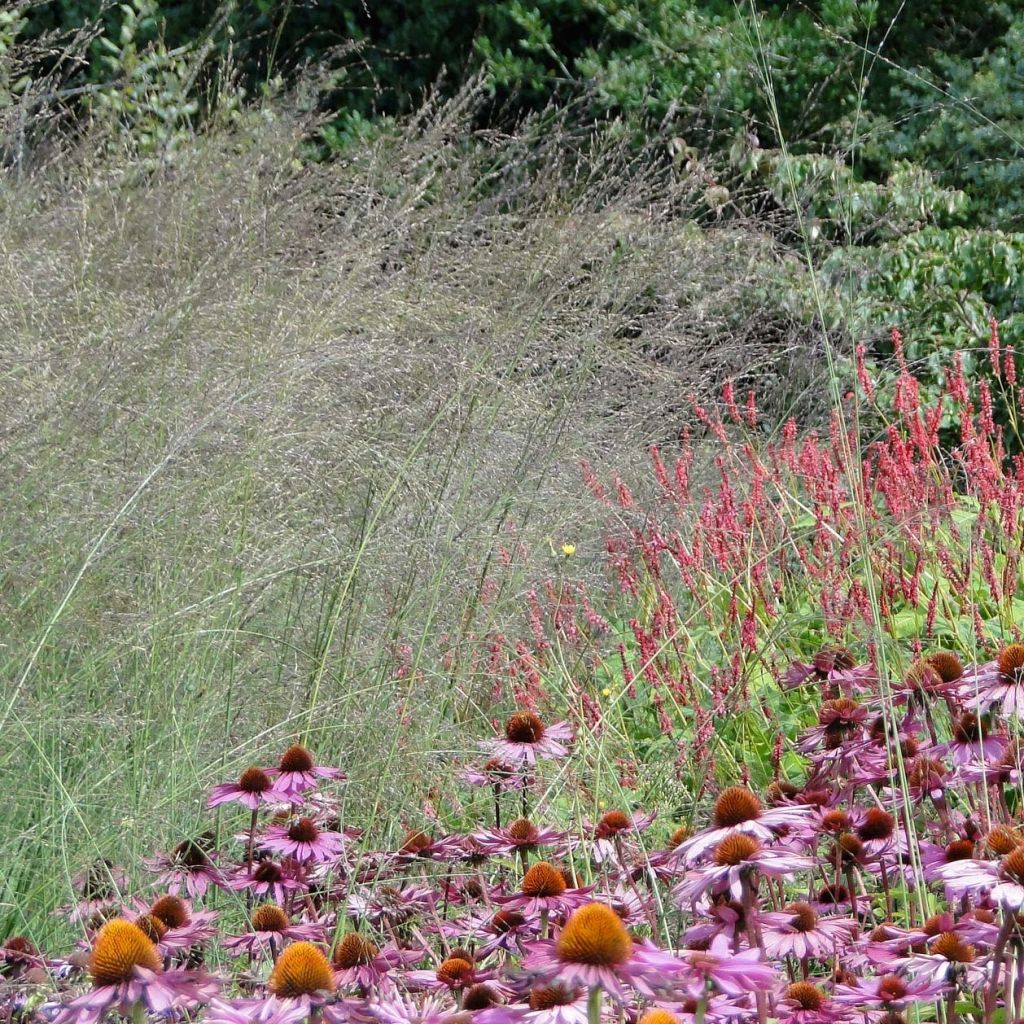

Molinia caerulea subsp. arundinacea Karl Foerster - Purple Moor-grass


Molinia caerulea subsp. arundinacea Karl Foerster - Purple Moor-grass
Molinia caerulea subsp. arundinacea Karl Foerster - Purple Moor-grass
Molinia caerulea subsp. arundinacea Karl Foerster
Purple Moor-grass, Moor Grass
The plant received was pruned very short as well... And the price of the 2/3 L pot is disproportionate as I received a pot that clearly does not contain more than a litre of soil... A bit disappointed but I hope it will develop in the spring...
Cyril, 07/09/2024
This item cannot be shipped to the selected country
Delivery charge from €5.90
More information
Schedule delivery date,
and select date in basket
This plant carries a 12 months recovery warranty
More information
We guarantee the quality of our plants for a full growing cycle, and will replace at our expense any plant that fails to recover under normal climatic and planting conditions.
From €5.90 for pickup delivery and €6.90 for home delivery
Express home delivery from €8.90.
Does this plant fit my garden?
Set up your Plantfit profile →
Description
Molinia caerulea subsp. arundinacea 'Karl Foerster' is an old variety of blue Molinia that remains unmatched for its architectural silhouette and beautiful autumn colours. It is a tall but extremely graceful grass, with airy light and moving flowers evoking soft feathers that elegantly dominate a lovely fountain of leaves. The entire plant is covered in gold in autumn. This exceptional plant adds charm to the late season and structures the flower beds even in winter with its frosty silhouette. Plant it in full sun, in any good garden soil.
Native to Northern Europe, Southwest and North Asia, Siberia, Turkey, and the Caucasus, Molinia caerulea belongs to the poaceae family. It owes its species name to the blue reflections that characterize its foliage. The subspecies arundinacea is distinguished by its tall stature, autumn colours, and inflorescences which are beautiful when laden with rain or traversed by the yellow and low autumn light. This grass has a thick, fibrous, and tenacious crown that takes a little time to establish, but lives for many years.
'Karl Foerster' is an old German selection particularly interesting for its beautiful autumn colours and the architectural beauty of its flowers. This perennial forms a clump of gracefully trailing foliage that will reach 45 to 50 cm (18 to 20in) high and 60 cm (24in) wide, from which tall flowering stems emerge from August, reaching 2 m (7ft) or more high. Its leaves are thin and flat, dark green and glossy in summer, turning golden blond in autumn, and persisting in a more beige to brown shade in winter. The tall, slender, and sturdy flowering stems bear panicles of airy spikelets that slightly arch and press against the stems. They are pink-brown to golden yellow in autumn, ending in a silvery hue in winter. The vegetation of this grass starts quite late in spring.
Milinia 'Karl Foerster' is a large, romantic grass with graceful yet well-defined architecture. Its presence is strong, its charm subtle and wild. For a beautiful effect in a natural garden, plant it in groups of 3 along a path, or at the corner of a terrace in a contemporary garden. In a countryside setting, plant it here and there between low bushes (groundcover roses) and perennials (autumn asters, tall sedums, echinaceas) or in front of conifers, so that the light illuminates it. It will also find a place near water points, where it will help to stabilise the banks, in the company of other grasses, druses, willowherbs, gunneras, or sedges.
The swollen base of the Blue Molinia stems is used as a pipe cleaner and toothpick. In nature, molinias are hosts to ergot, a disease of cereals, including rye, which causes serious neurological disorders if eaten by humans due to the hallucinogenic alkaloids it contains. Among cereals, only maize and sorghum are not affected.
Report an error about the product description
Molinia caerulea subsp. arundinacea Karl Foerster - Purple Moor-grass in pictures


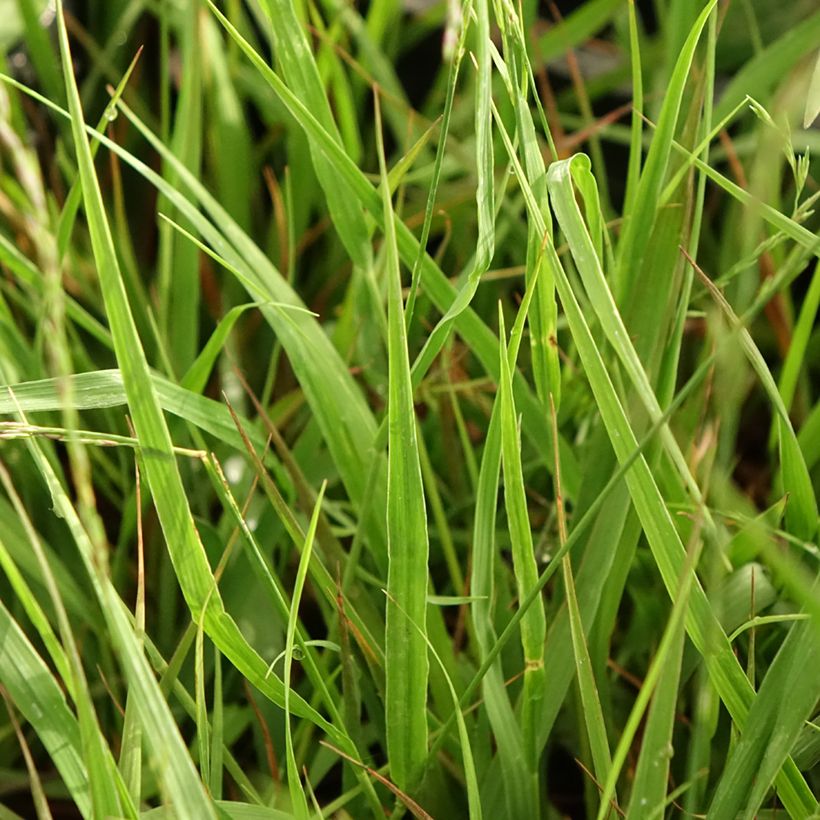

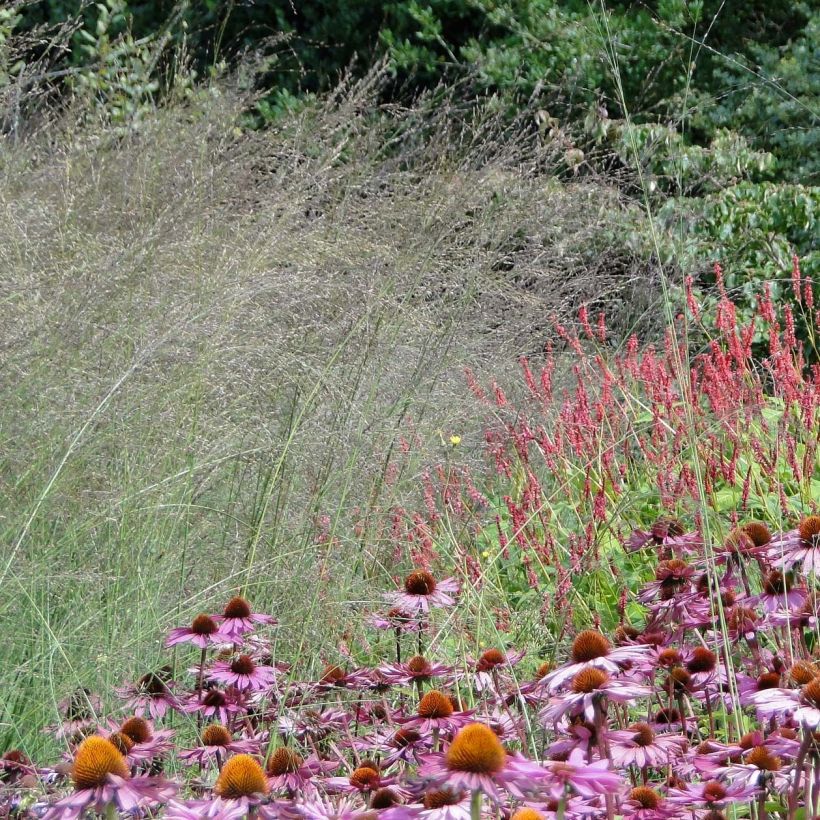

Flowering
Foliage
Plant habit
Botanical data
Molinia
caerulea subsp. arundinacea
Karl Foerster
Poaceae
Purple Moor-grass, Moor Grass
Cultivar or hybrid
Other Molinia
Planting and care
Molinia caerulea Karl Foerster adapts to all types of soil, as long as they are not too chalky or dry. It prefers soils which are moist in summer, but tolerates moderate periods of drought, as well as soils waterlogged during the growing season. This makes it an easy grass to grow successfully. Plant it in a sunny position, or at most partial shade in regions with hot summers. Water abundantly at planting, which should be done outside the frost periods. Avoid too much fertiliser. Remove damaged foliage during the growing season and prune the clump at the end of winter, just before the start of new growth. The floral stems can be cut before winter, as they tend to break over time.
Planting period
Intended location
Care
-
, onOrder confirmed
Reply from on Promesse de fleurs
Foolproof perennials
Haven't found what you were looking for?
Hardiness is the lowest winter temperature a plant can endure without suffering serious damage or even dying. However, hardiness is affected by location (a sheltered area, such as a patio), protection (winter cover) and soil type (hardiness is improved by well-drained soil).

Photo Sharing Terms & Conditions
In order to encourage gardeners to interact and share their experiences, Promesse de fleurs offers various media enabling content to be uploaded onto its Site - in particular via the ‘Photo sharing’ module.
The User agrees to refrain from:
- Posting any content that is illegal, prejudicial, insulting, racist, inciteful to hatred, revisionist, contrary to public decency, that infringes on privacy or on the privacy rights of third parties, in particular the publicity rights of persons and goods, intellectual property rights, or the right to privacy.
- Submitting content on behalf of a third party;
- Impersonate the identity of a third party and/or publish any personal information about a third party;
In general, the User undertakes to refrain from any unethical behaviour.
All Content (in particular text, comments, files, images, photos, videos, creative works, etc.), which may be subject to property or intellectual property rights, image or other private rights, shall remain the property of the User, subject to the limited rights granted by the terms of the licence granted by Promesse de fleurs as stated below. Users are at liberty to publish or not to publish such Content on the Site, notably via the ‘Photo Sharing’ facility, and accept that this Content shall be made public and freely accessible, notably on the Internet.
Users further acknowledge, undertake to have ,and guarantee that they hold all necessary rights and permissions to publish such material on the Site, in particular with regard to the legislation in force pertaining to any privacy, property, intellectual property, image, or contractual rights, or rights of any other nature. By publishing such Content on the Site, Users acknowledge accepting full liability as publishers of the Content within the meaning of the law, and grant Promesse de fleurs, free of charge, an inclusive, worldwide licence for the said Content for the entire duration of its publication, including all reproduction, representation, up/downloading, displaying, performing, transmission, and storage rights.
Users also grant permission for their name to be linked to the Content and accept that this link may not always be made available.
By engaging in posting material, Users consent to their Content becoming automatically accessible on the Internet, in particular on other sites and/or blogs and/or web pages of the Promesse de fleurs site, including in particular social pages and the Promesse de fleurs catalogue.
Users may secure the removal of entrusted content free of charge by issuing a simple request via our contact form.
The flowering period indicated on our website applies to countries and regions located in USDA zone 8 (France, the United Kingdom, Ireland, the Netherlands, etc.)
It will vary according to where you live:
- In zones 9 to 10 (Italy, Spain, Greece, etc.), flowering will occur about 2 to 4 weeks earlier.
- In zones 6 to 7 (Germany, Poland, Slovenia, and lower mountainous regions), flowering will be delayed by 2 to 3 weeks.
- In zone 5 (Central Europe, Scandinavia), blooming will be delayed by 3 to 5 weeks.
In temperate climates, pruning of spring-flowering shrubs (forsythia, spireas, etc.) should be done just after flowering.
Pruning of summer-flowering shrubs (Indian Lilac, Perovskia, etc.) can be done in winter or spring.
In cold regions as well as with frost-sensitive plants, avoid pruning too early when severe frosts may still occur.
The planting period indicated on our website applies to countries and regions located in USDA zone 8 (France, United Kingdom, Ireland, Netherlands).
It will vary according to where you live:
- In Mediterranean zones (Marseille, Madrid, Milan, etc.), autumn and winter are the best planting periods.
- In continental zones (Strasbourg, Munich, Vienna, etc.), delay planting by 2 to 3 weeks in spring and bring it forward by 2 to 4 weeks in autumn.
- In mountainous regions (the Alps, Pyrenees, Carpathians, etc.), it is best to plant in late spring (May-June) or late summer (August-September).
The harvesting period indicated on our website applies to countries and regions in USDA zone 8 (France, England, Ireland, the Netherlands).
In colder areas (Scandinavia, Poland, Austria...) fruit and vegetable harvests are likely to be delayed by 3-4 weeks.
In warmer areas (Italy, Spain, Greece, etc.), harvesting will probably take place earlier, depending on weather conditions.
The sowing periods indicated on our website apply to countries and regions within USDA Zone 8 (France, UK, Ireland, Netherlands).
In colder areas (Scandinavia, Poland, Austria...), delay any outdoor sowing by 3-4 weeks, or sow under glass.
In warmer climes (Italy, Spain, Greece, etc.), bring outdoor sowing forward by a few weeks.



































